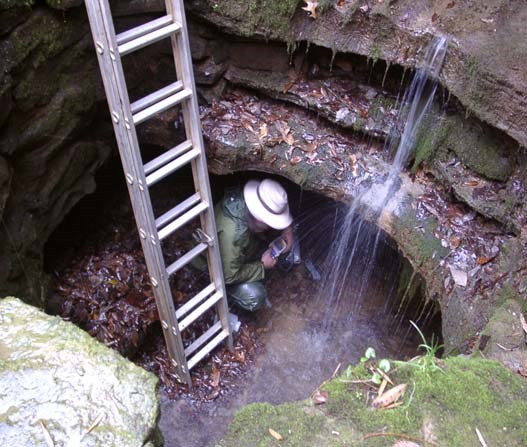
NPS Photo
Located in central Kentucky, Abraham Lincoln Birthplace National Historical Park contains two units approximately 10 miles apart. One represents the birthplace of our country's 16th president (117 acres), and the other his boyhood home (228 acres).
The Cumberland Piedmont Network I&M program has provided this park with a vegetation community classification and map, a wetlands inventory, and updated vascular plant and vertebrate species lists. During the vegetation community classification work, 13 distinct associations were documented and mapped, including a rare type of limestone glade. Remnants of floodplain canebrakes were also discovered and have potential for restoration.
The network monitoring program at this park includes four vital signs that involve repeated visits to established sites, following procedures established by each monitoring protocol. These four vital signs are: forest vegetation communities, invasive species early detection, ozone/foliar injury, and water quality. Water quality monitoring began in 2004 and continues on a bi-monthly schedule every-other-year (even years) at three sites: two on the boyhood home unit, and one at Sinking Spring on the birthplace unit. Forest monitoring began in 2011–2012 with the establishment of 16 long-term monitoring plots.Additional plots will be established in upcoming years, followed by a five-year revisit schedule, occurring in early September. Ozone levels and foliar injury are assessed on-site every six years, beginning in 2008. The Invasive Species Early Detection protocol was completed in 2012 and will be used by field crews to monitor for priority exotics during their scheduled field work.
Park managers are using inventory and monitoring data to create resource stewardship strategies for achieving desired future conditions. The links to inventory and monitoring reports are provided on this page.
For more Information contact:
Steve Thomas, Network Program Manager, CUPN offices at Mammoth Cave NP
Select a Park:
Select a Species Category (optional):
Visit NPSpecies for more comprehensive information and advanced search capability. Have a suggestion or comment on this list? Let us know.
Last updated: January 12, 2021
